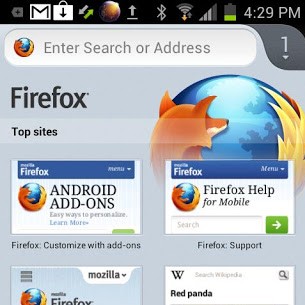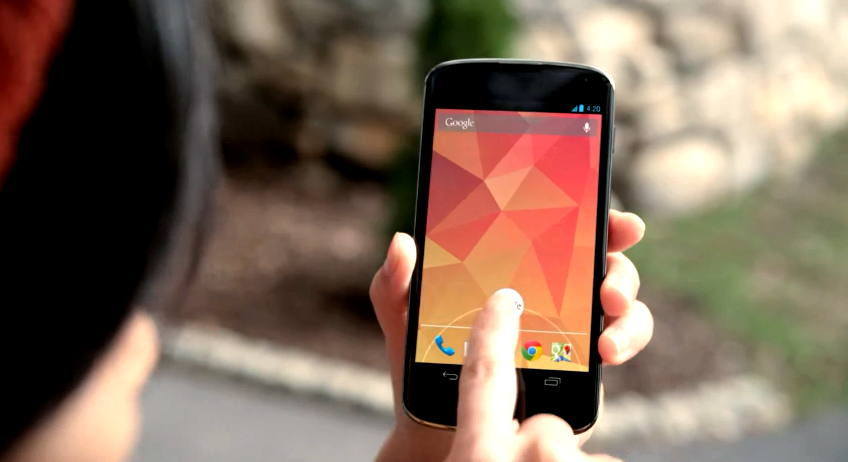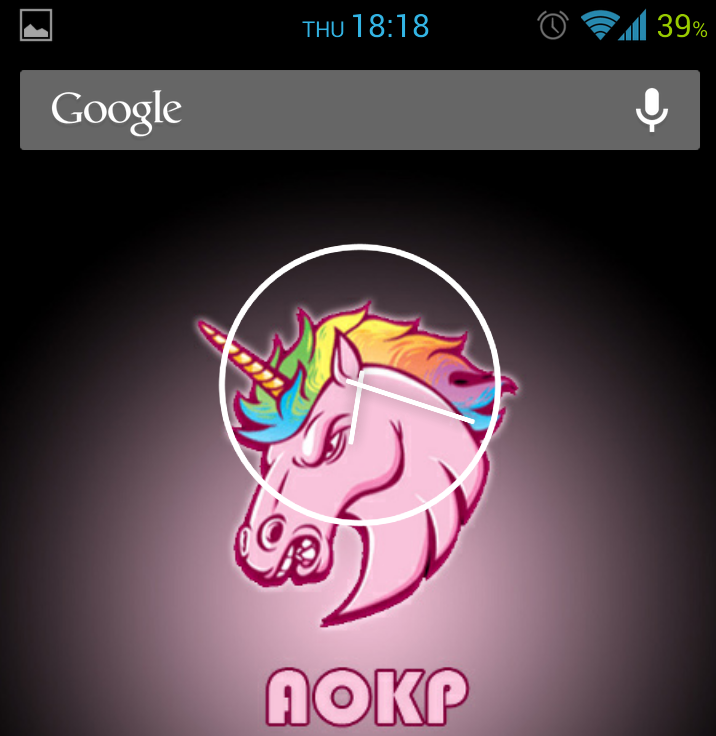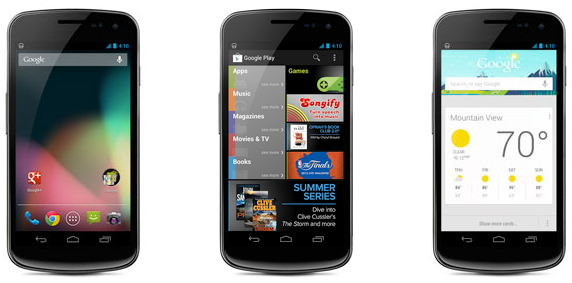
HTC DROID DNA available for purchase at Verizon Wireless
Starting today the HTC DROID DNA is available for purchase at Verizon Wireless. On a two-year contract the J butterfly's US brother runs for $199.99, while off-contract it costs a marginally higher $599.99.
Like the J butterfly, the DROID DNA comes with a massive 5-inch Super LCD3 display with 1920-by-1080 resolution and Corning Gorilla Glass 2 for protection. Power comes from a 1.5GHz quad-core Qualcomm Snapdragon S4 Pro processor backed by 2GB of RAM and a relatively small 2020mAh non-removable battery. Unlike the J Butterfly, the big red version has to make due with just 16GB of internal storage as it does not feature a microSD card slot.

Custom recoveries available for Google Nexus 4, 10 with Android 4.2 support
Custom recovery is at the core of Android modding by allowing users to root or load custom green droid distributions. The recently launched Nexus 4 and Nexus 10, running Android 4.2 Jelly Bean, can also join the modding train with new custom recoveries from ClockwordMod and Team Win Recovery Project.
With Android 4.2 Jelly Bean, Google introduced a new feature -- multiple-user support -- which modifies the internal storage structure by adding a "0" folder for the default user. Aside from the obvious benefit, the new functionality also causes issues with custom recoveries that are not designed to take it into account. Now though CWM 6.0.1.8/9 and TWRP 2.3.2.0 are available with support for the recently introduced Nexus 4, 10 and multiple user support.

Firefox for Android update supports older devices
Parent company Mozilla announced that Firefox for Android now supports older green droid devices using ARM v6 architecture. The latest update allows the open-source browser to run on smartphones such as HTC Status, Motorola Fire XT or Samsung Galaxy Ace, but also looks to the present with improvements for newer versions of Android.
Mozilla claims that limiting Firefox for Android to run solely on the ARM v7 architecture would eliminate "roughly half of the nearly 500 million Android phones", obviously making a dent in its market share and popularity among green droid users. The minimum hardware requirements now involve an 800MHz ARM v6 processor accompanied by 512MB of RAM. What about less "ancient" devices?

Google Nexus 4 Toolkit is available for modding enthusiasts
Last week Google launched its new flagship smartphone -- the Nexus 4. Shortly after, Android developers bestowed the LG-made device with root, but for hassle-free modding there is an all-in-one toolkit available as well.
Manual modding operations offer more control over the process, but take more time to perform. The Nexus 4 Toolkit is designed to automate a considerable number of tasks ranging from rooting Android 4.2 Jelly Bean to setting file permissions on Google's flagship smartphone. Users can also lock/unlock the bootloader, perform a full-system backup using ADB, install BusyBox, download the factory image, flash a custom or stock recovery and much more.

Passwords Plus cross-platform password manager finally comes to Android
DataViz Inc. on Monday launched Passwords Plus on the Android Platform, making Android the fourth platform for the password management software behind Windows, Mac OS, and iOS.
The functionality of this app should be quite clear from its name. Over in our Fileforum, we have literally hundreds of this type of application for Windows, Mac, and Linux-based platforms, and they all conveniently have "Password" in the name. There should be no surprises.
Passwords Plus is available for smartphones running Android 2.1 and up, and it stores PINs, passwords and "other sensitive information" in 256-bit AES encryption, syncing between multiple devices and platforms. Data is synced via DataViz's secure cloud storage and SamePage technology.

Google Nexus 4 receives root shortly after the big launch
Google is known for its laissez-faire philosophy when it comes to Android modding. As a result, shortly after the company launched the new Nexus 4 with Android 4.2 Jelly Bean, members of the modding community bestowed the new smartphone with elevated privileges (popularly known as "root").
Rooting Android 4.2 Jelly Bean on the Google Nexus 4 is similar to the method that I recommended in "How to root Android 4.2" for the Galaxy Nexus and Nexus 7. In order to run apps with elevated privileges Nexus 4 users have to enable Android debugging, unlock the bootloader and load (not install) a custom kernel or recovery. The latter of the two allows to flash the SuperSU package in order to root Android 4.2, while the former requires to perform a number of commands in order to achieve the same result.

Android 4.1 Jelly Bean leaked ROM available for Samsung Galaxy S II
No, there is no "I" missing from the end of the headline. More than a week ago a leaked Android 4.1 Jelly Bean ROM surfaced for the Samsung Galaxy Note, and now there's one for the Galaxy S II as well. So if you like jelly beans and can't wait for the official upgrade there's a way to get that quick fix.
The leaked Android 4.1 Jelly Bean ROM for the Galaxy S II is compatible only with the international model (codename "I9100"). As a result it will not work with other variations such as US carrier-specific versions. The build is dated November 6 and it is based on Android 4.1.2 Jelly Bean, build number JZO54K (newest available). Users can expect a similar look and feel to the latest TouchWiz interation, under the hood changes thanks to Project Butter and improved voice search using Google Now.

Google TV's killer app is simply amazing
This week, Google brought a little something from ill-fated Nexus Q to Google TV. Even my non-techie wife is amazed, and that's the point. This little something is really big, because anyone can use it and get dramatic benefits.
The new YouTube for Android app installed on smartphone or tablet now acts as a remote control to Google TV, taking interaction far removed and clumsy and making it intimate, fun and easy. If Amazon and Netflix operated similarly -- and the set-top box got Hulu Plus -- I'd cancel AT&T U-verse, baby.

AOKP Jelly Bean Milestone 1 -- riding pink unicorns [review]
AOKP is one of the most popular names in the Android modding community, gathering more than 180,000 installations in the past couple of months. The team released the latest build -- Jelly Bean Milestone 1 -- two weeks ago, so let's take a look and see what all the fuss is about. Straight off the bat I have to warn that you might see some pink unicorns around. Don't worry, they don't bite unless provoked.
Before we begin I have to mention that since I installed AOKP Jelly Bean Milestone 1 (catchy name, don't you think?) Android 4.2 popped up on the horizon, which I ran shortly after. In my review of the second Jelly Bean iteration I made a number of comparisons with popular custom Android distributions, only to realize that the stock version was the least inspiring upgrade that I performed in the past couple of months. Why? I simply missed my AOKP ROM, because in so many ways it's more suited for an enthusiast like myself.

CF-Auto-Root available for Android Samsung devices
If you want to root your Android Samsung device without resorting to a custom recovery then CF-Auto-Root is the tool for you. It enables elevated privileges, while keeping things as close to stock as possible. A voided warranty is no good, so there's a tool for that, too.
The approach is similar to stock because CF-Auto-Root only installs the SuperSU binary and APK as well as the stock recovery. The first two are used to manage root access on Android, while the latter overrides any third-party recovery. Elevated privileges are basically granted after flashing the CF-Auto-Root package for the Samsung device as PDA in ODIN.

CyanogenMod.com domain crisis laid to rest
Today the team behind the popular custom Android distribution CyanogenMod announced that the domain crisis is now contained, after previously losing control of cyanogenmod.com. But all modding affairs will now continue on the new domain cyanogenmod.org, instead of the previous digital shelter.
Apparently the problem was caused by a former member who owns cyanogenmod.com. The CM team says that he donated the domain in the early days of the project in order to support it, but recently took charge and "violated" their trust. Allegedly the former member set up deals in his personal interest under the name of the project and even impersonated Steve Kondik, the founder of CyanogenMod. The ex-member demanded $10,000 in order to restore control, which he did not receive.

You can thank Microsoft for iPhone's retreat before the Android Army
Two months ago, I declared Android winner in the smartphone wars. The victory is now broader, in a total route of all competing operating systems and in process driving down iOS market share. That's right, after more than five years of near-constant growth, Apple's platform retreats before the Android Army.
Android's global smartphone OS share rose a stunning 19.9 points year over year in third quarter, according to Gartner. That's to 72.4 percent, up from 52.5 percent. Meanwhile iOS fell to 13.9 percent from 15 percent.

CyanogenMod 10 reaches stable status, CM 10.1 will be released
A Little more than a month after CyanogenMod 10 M2 was released, the team behind the popular custom Android distribution announced the third monthly build. Like before, the focus is on stability. And since Android 4.2 was pushed to AOSP yesterday, there is some information on the future CyanogenMod 10.1 as well.
The work on CM 10 is not over just yet, even though the latest release is labeled as "stable" or "LTS" (Long Term Support). Nightly builds are still hitting supported devices and bug reports are expected to keep coming as well. But with more than 10,000 installs since yesterday, the stable version is taking off quite well.

Android 4.2 hits AOSP, factory images available for Nexus devices
Android Open Source Project Technical Lead Jean-Baptiste Queru announced that Google is pushing the Android 4.2 source code to AOSP, after the company released the second Jelly Bean-branded operating system today. To complement Android 4.2 the Mountain View, Calif.-based corporation also uploaded the factory images for a number of Nexus devices.
The Android 4.2 source code will be available under the "android-4.2_r1" name, with the matching development branch named "jb-mr1-dev". Interestingly enough Queru says that the Nexus 10 is the best choice for AOSP work on the latest version of Android, which he considers the most open flagship device. But the Nexus 7 with 3G connectivity is not supported at the moment because of the GSM stack that is not yet licensed for the Android Open Source Project.

How to root Android 4.2
Today Google launches Android 4.2 alongside the new Nexus lineup. Galaxy Nexus as well as Nexus 7 owners that have the ability to run apps with elevated privileges are faced with a dilemma on whether to upgrade or not. Fear not, you can still root your Nexus using the latest version of Android.
The advantages of rooting are nothing to sneeze at. I run apps with elevated privileges more than a few times a day and I had to get the root capabilities up and running after upgrading to Android 4.2. The process is fairly straightforward and should not pose any difficulty even to less experienced users. I do have to mention that this guide can apply to the Nexus 4 and 10 as well, after developers release the compatible tools.
Getting started
